We were told that Katu Homestay a great place to stop for a cup of coffee but we ended up staying here for the night.
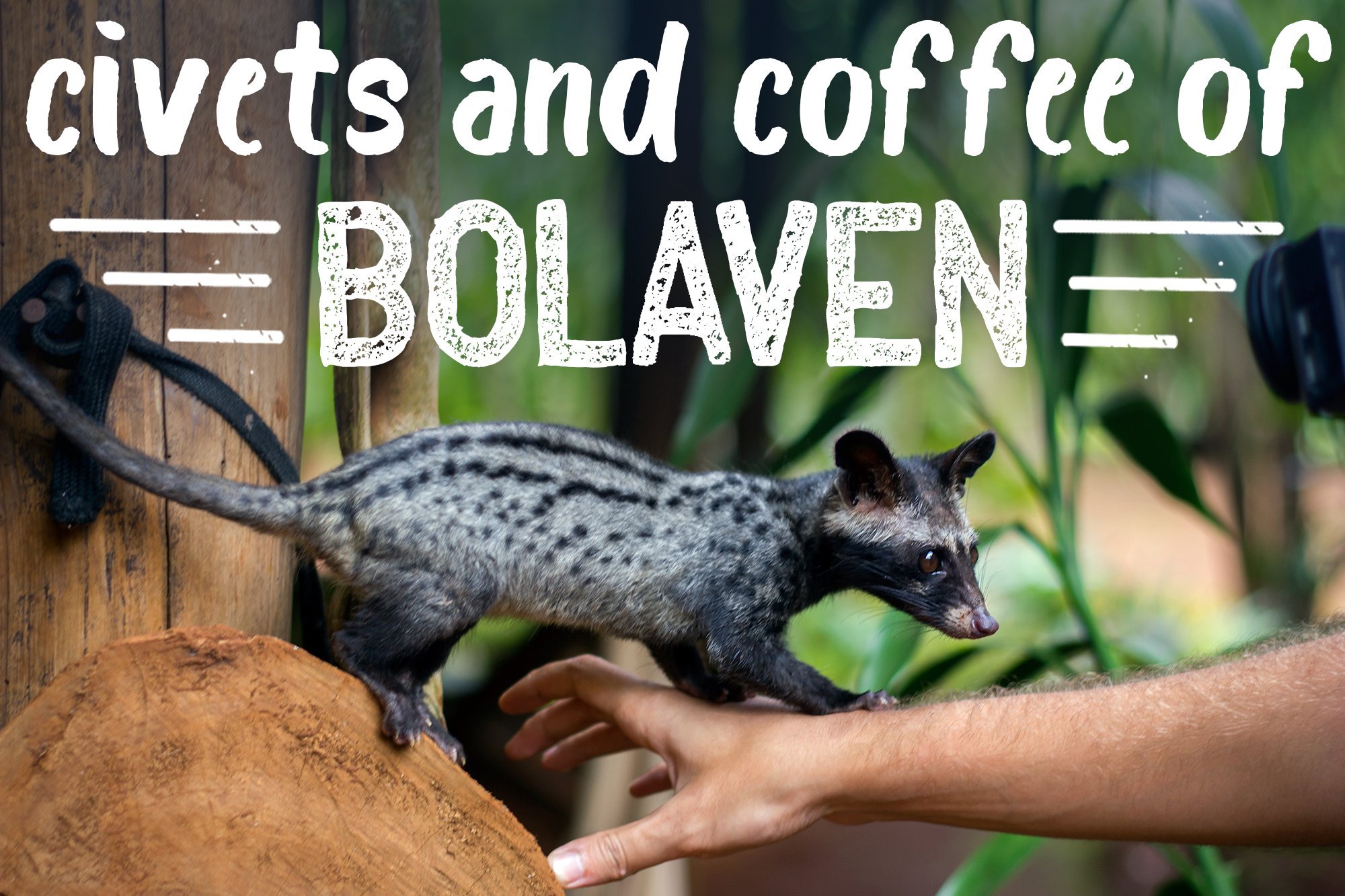
You can see how our plateau Bolaven trip started hereSorry it took such a long time to post the next part, was very busy these few days. 😏
So here's how a Lao village looks:
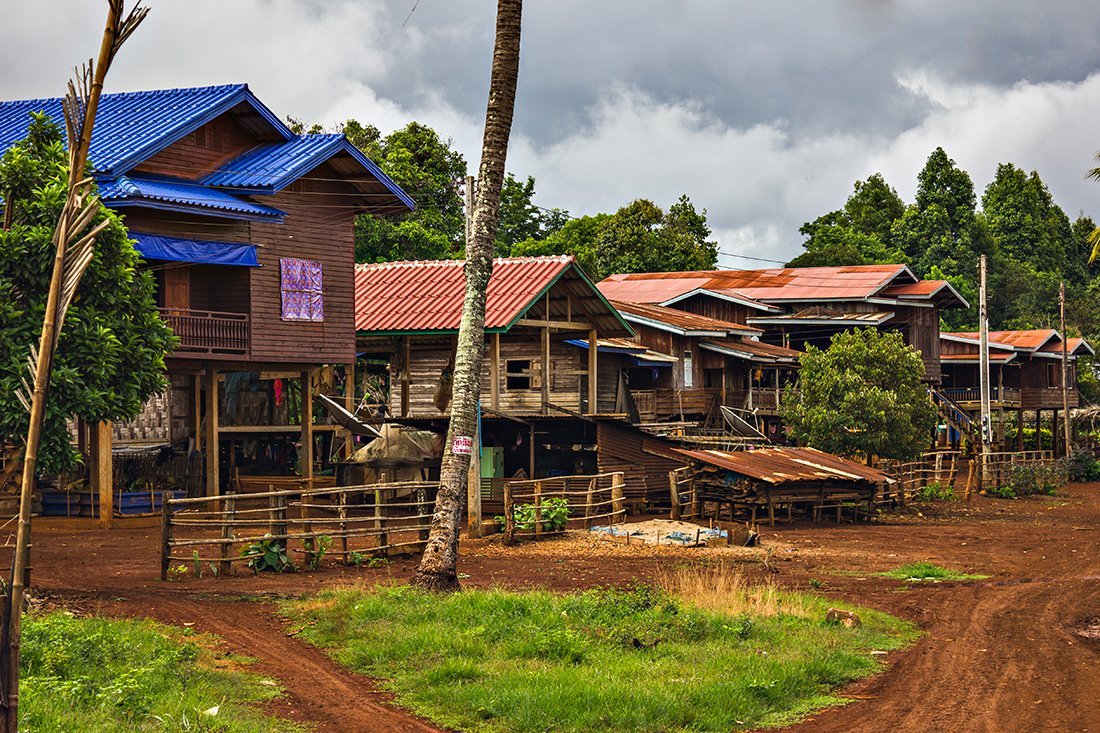
Katu homestay is run by Mr Vieng - a very nice Lao guy who grows organic coffee with help of his fellow villagers.
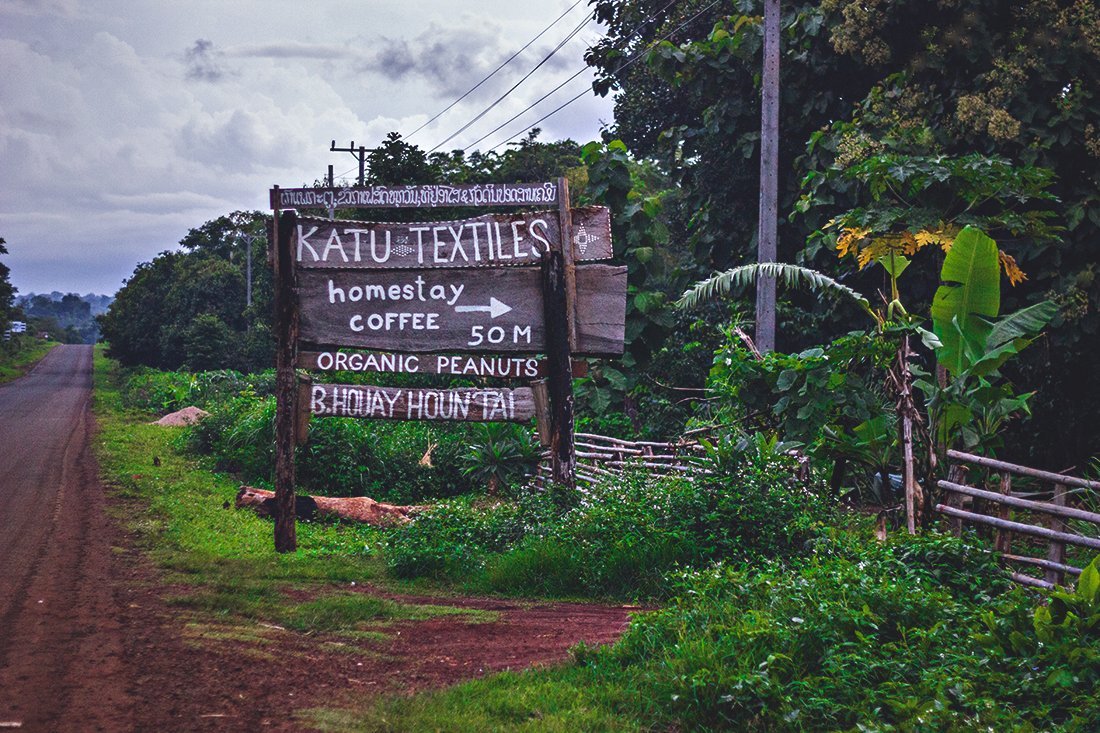
Mr Vieng told us that he used to grow coffee to sell it to some factory, and they took both ripe and green beans but didn't pay much.
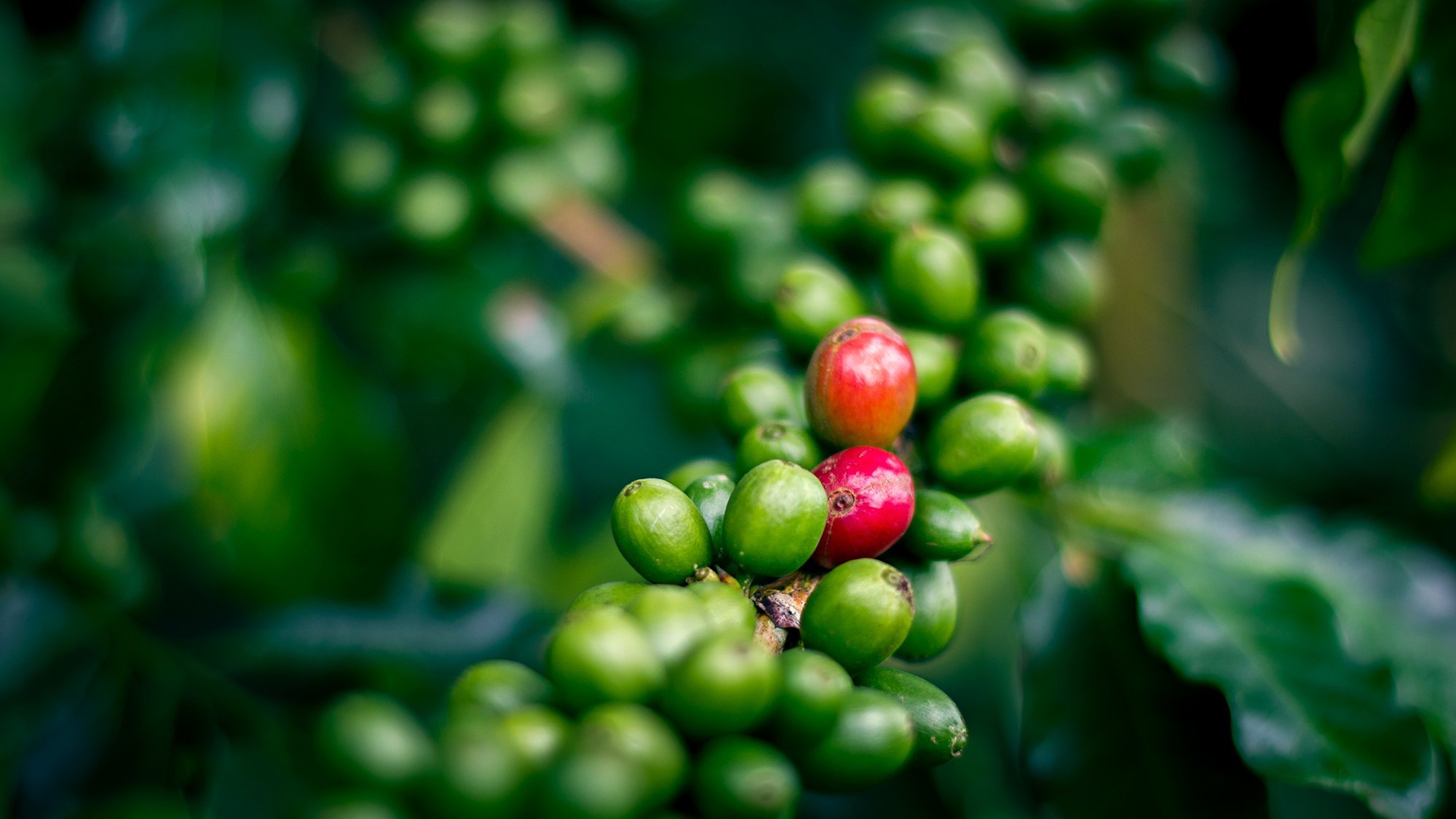
So he decided to make organic coffee himself, using only nice ripe coffee berries, and he also owns a simple homestay and offers tours around his plantation.
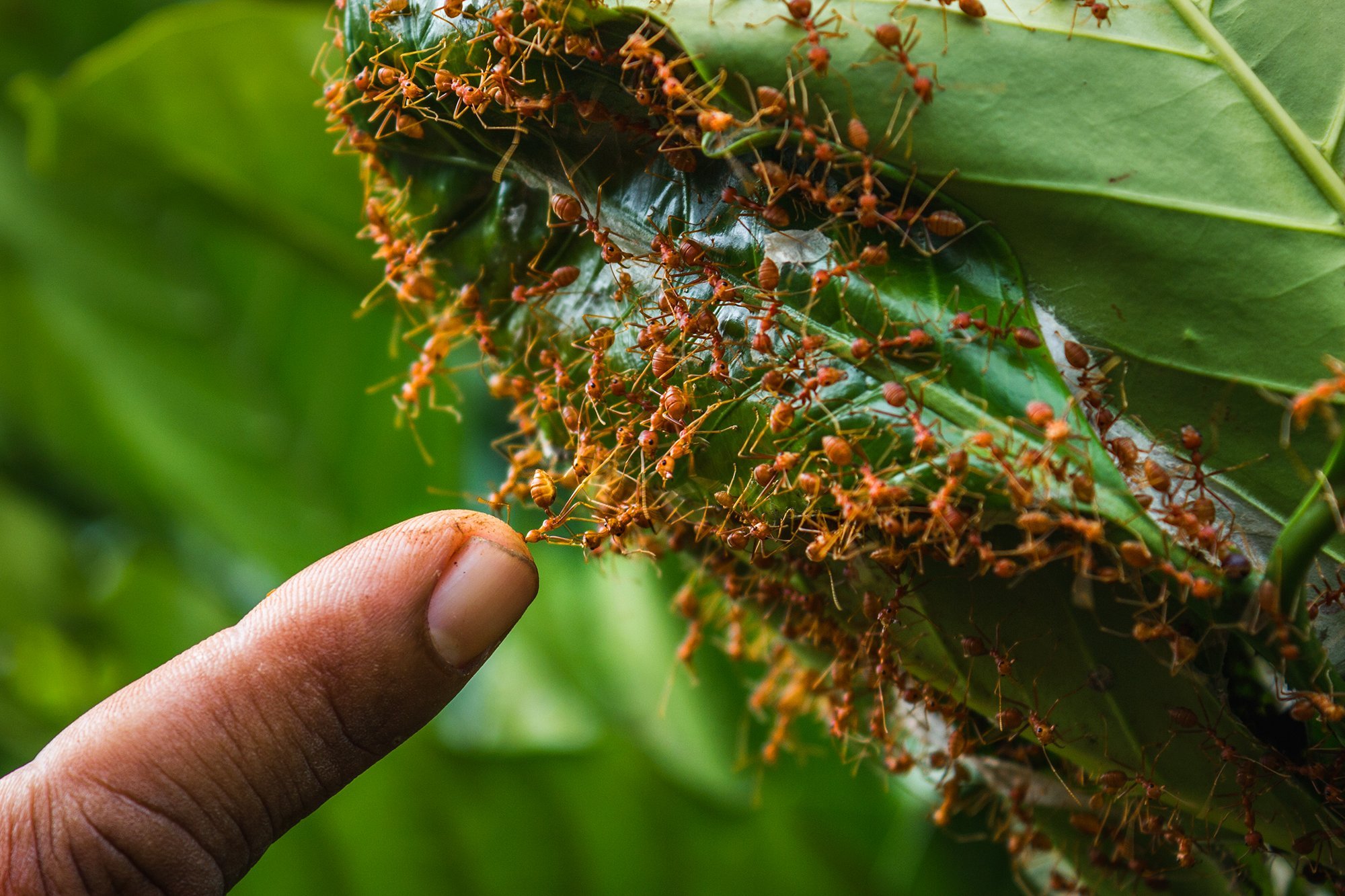
He showed us ants occupying some bushes because he doesn't use pesticides and burns affected plants instead. Mr Vieng told us that those ants are sour in taste and he sometimes uses them to cook. To prove it he ate one in front of us 😃
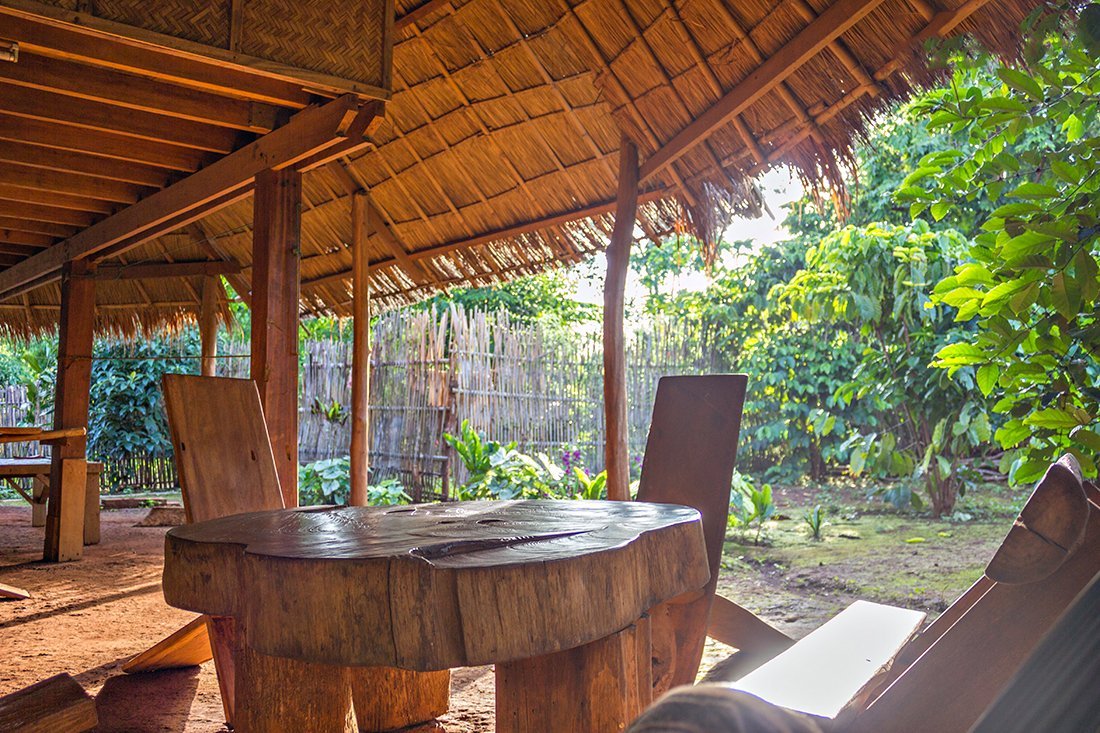
This place is really basic, and it has this nice village vibe, prices here are low, of course, see this menu:
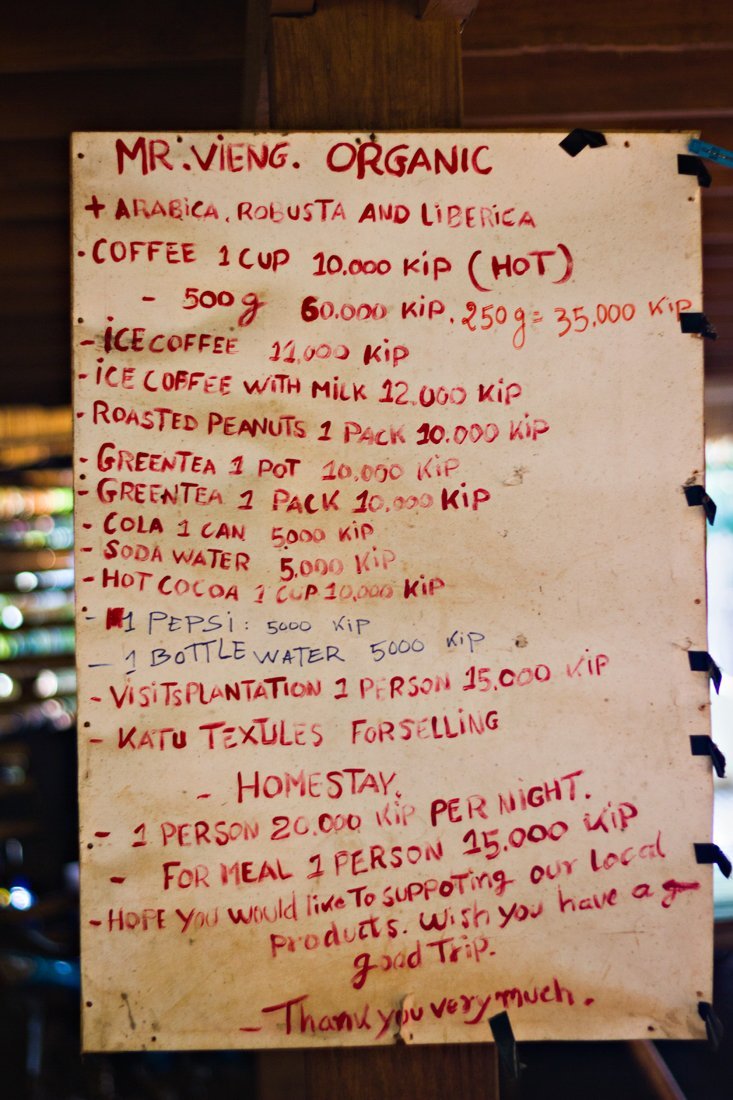
10,000 Lao Kips = 1.2 US Dollars as of 9/4/2017
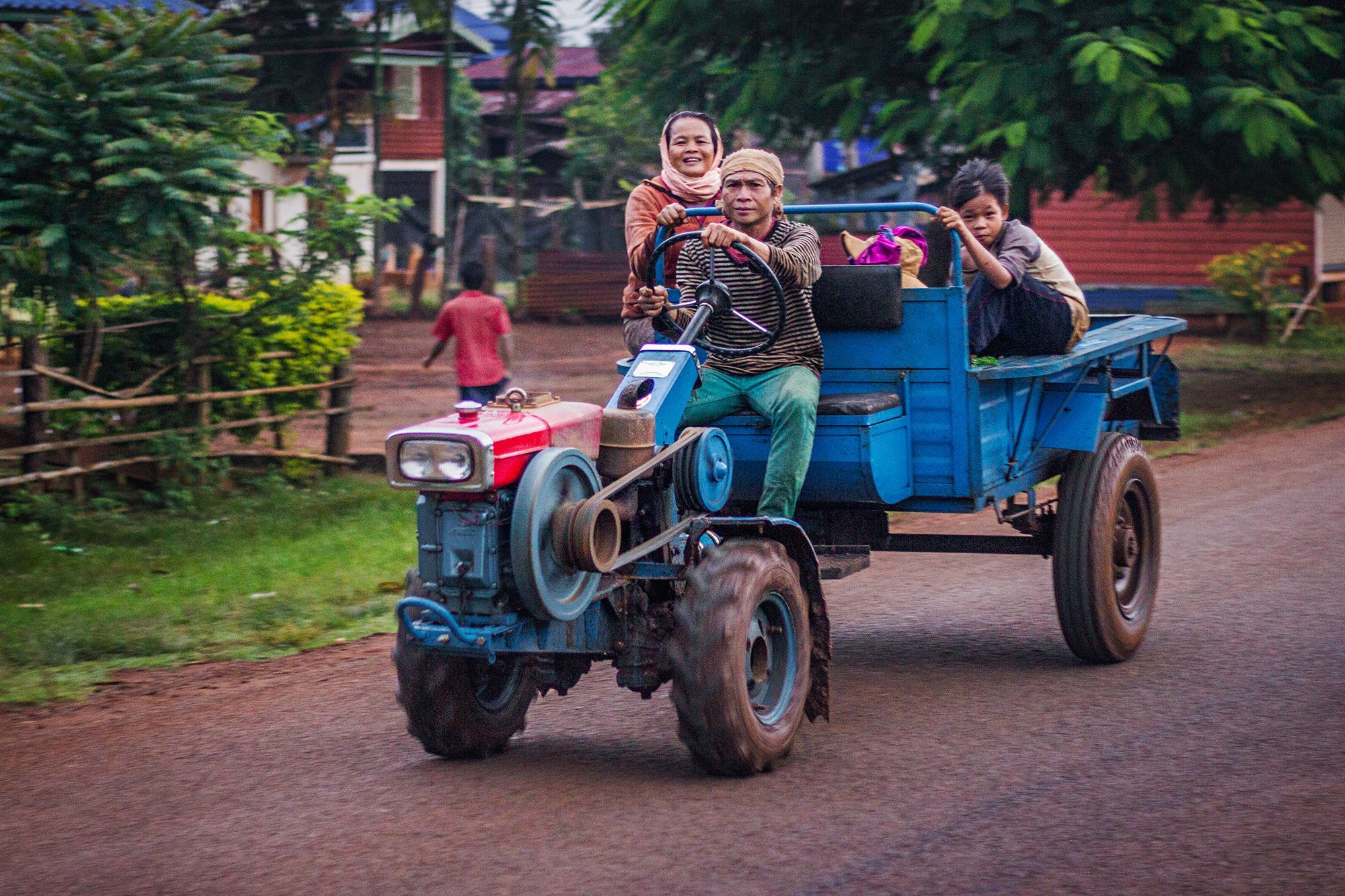
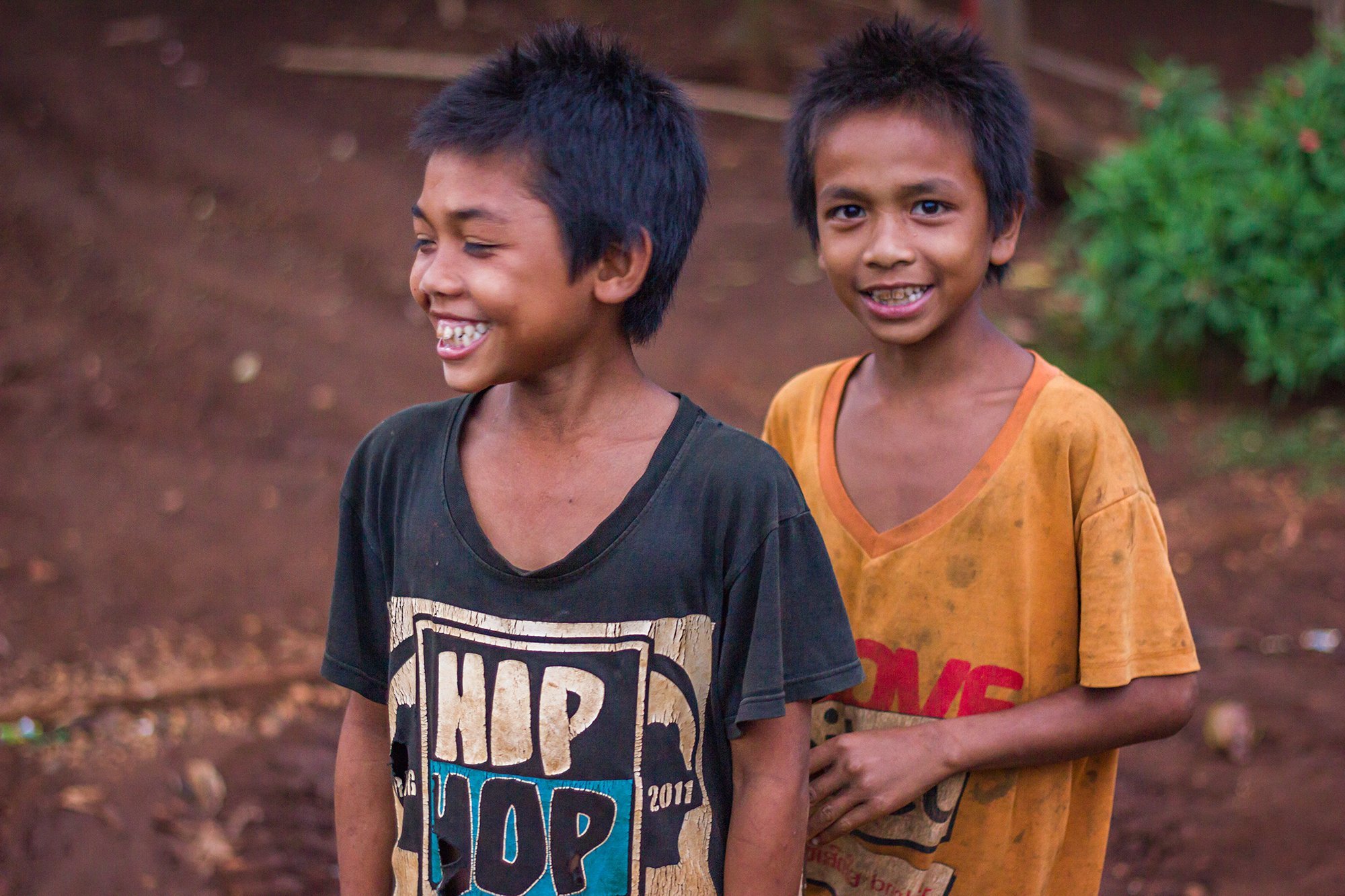
All the people in the village were super friendly, smiling and waving hands.
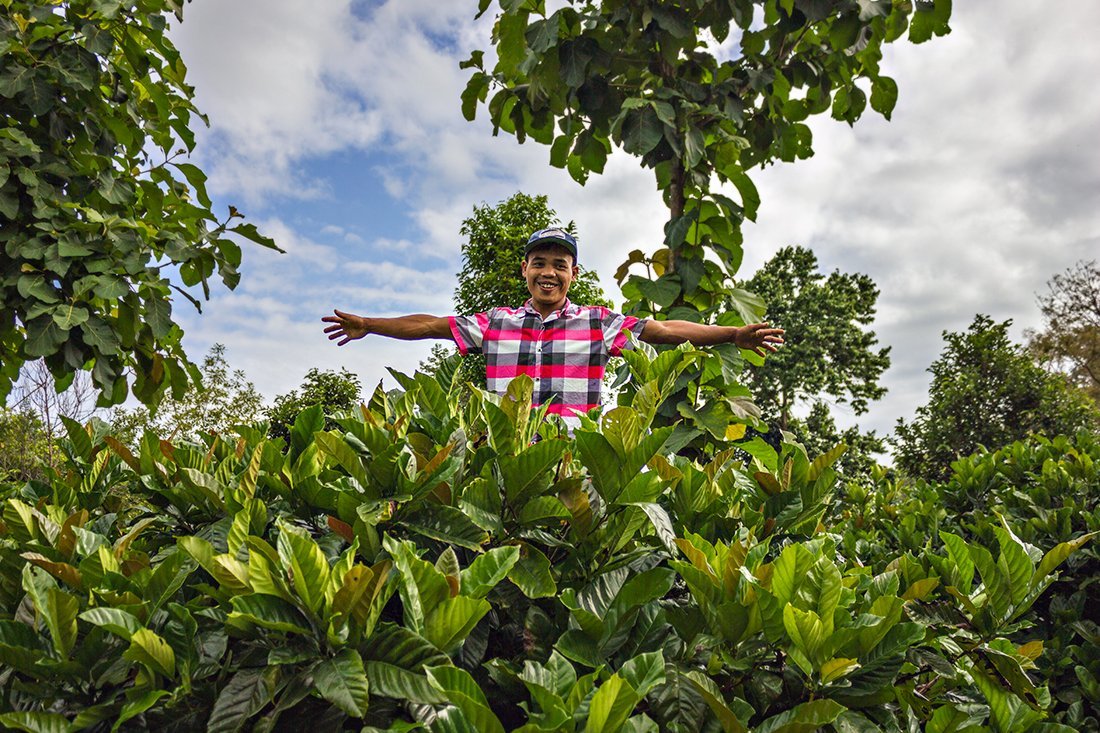
Vieng explained us about three kinds of coffee that he grows: Arabica, Robusta and Liberica. Arabica is the most sought after coffee specie with high quality tasting characteristics, little acidity and caffeine. Robusta is the second most sought after, easy to maintain and thus to produce. It has a huge amount of caffeine twice as much as in Arabica coffee. Liberica grows up to 9 meters tall and gives cherries larger than those picked from Arabica plants. It is similar to Robusta beans tasting characteristics.
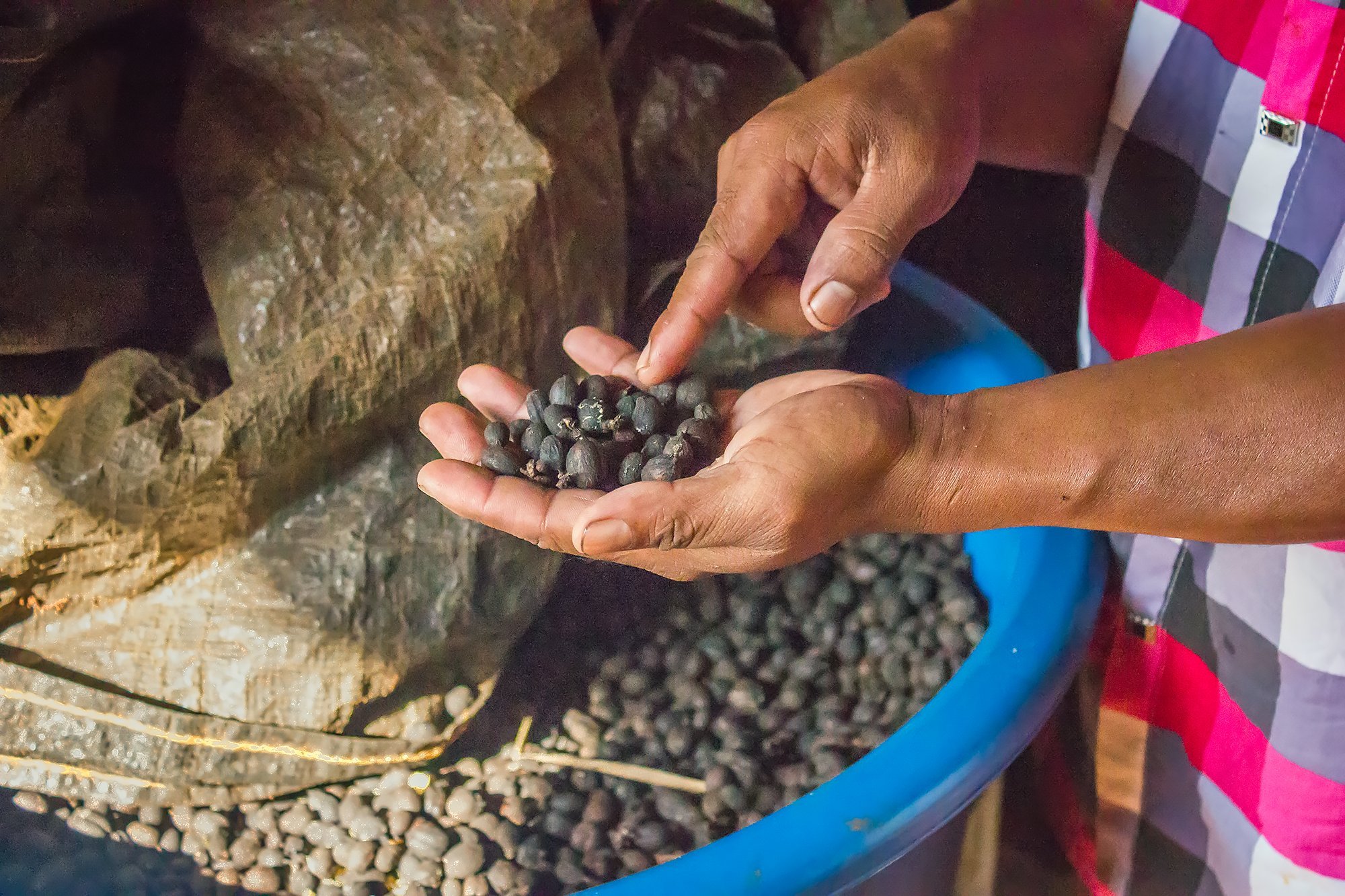
He showed us how he dries the beans and explained how they roast it. We drank a lot of his coffee, and it was really good. He also always offers some peanuts with it, that was a bit strange for me but nice. 😊
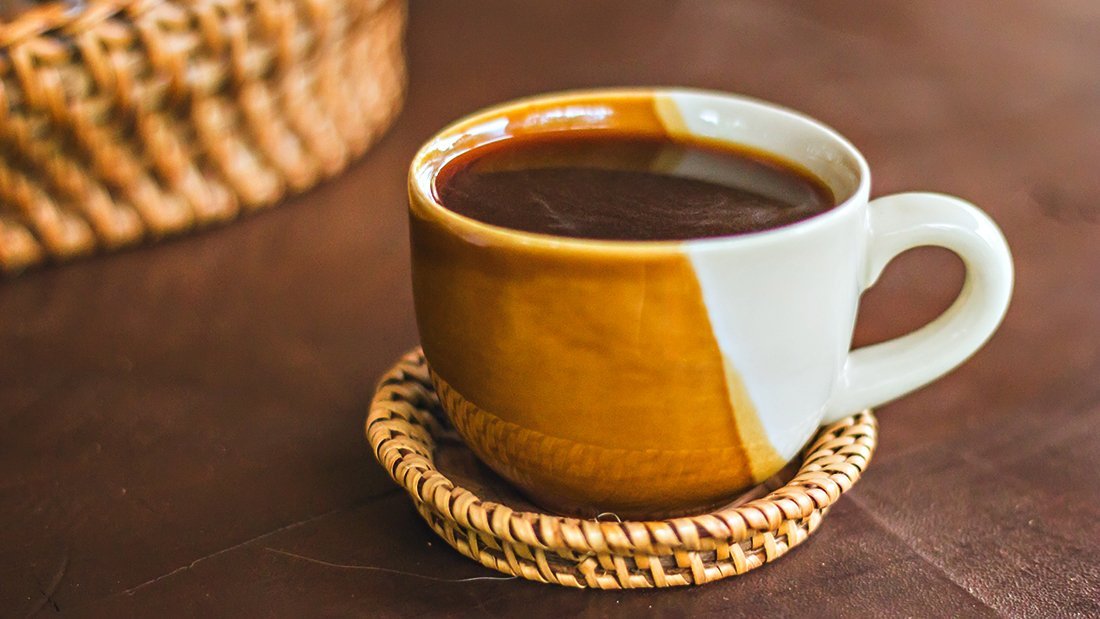
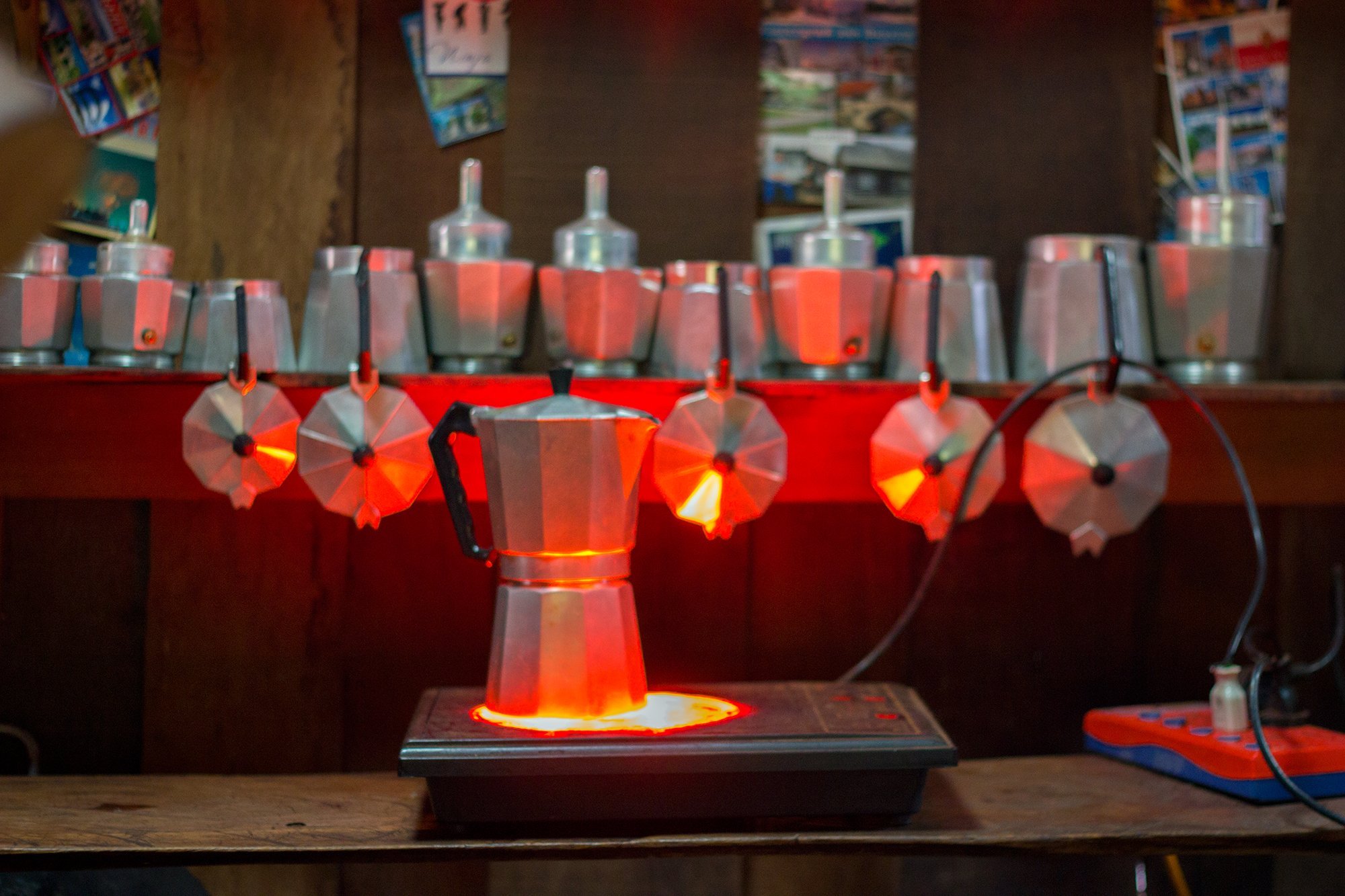
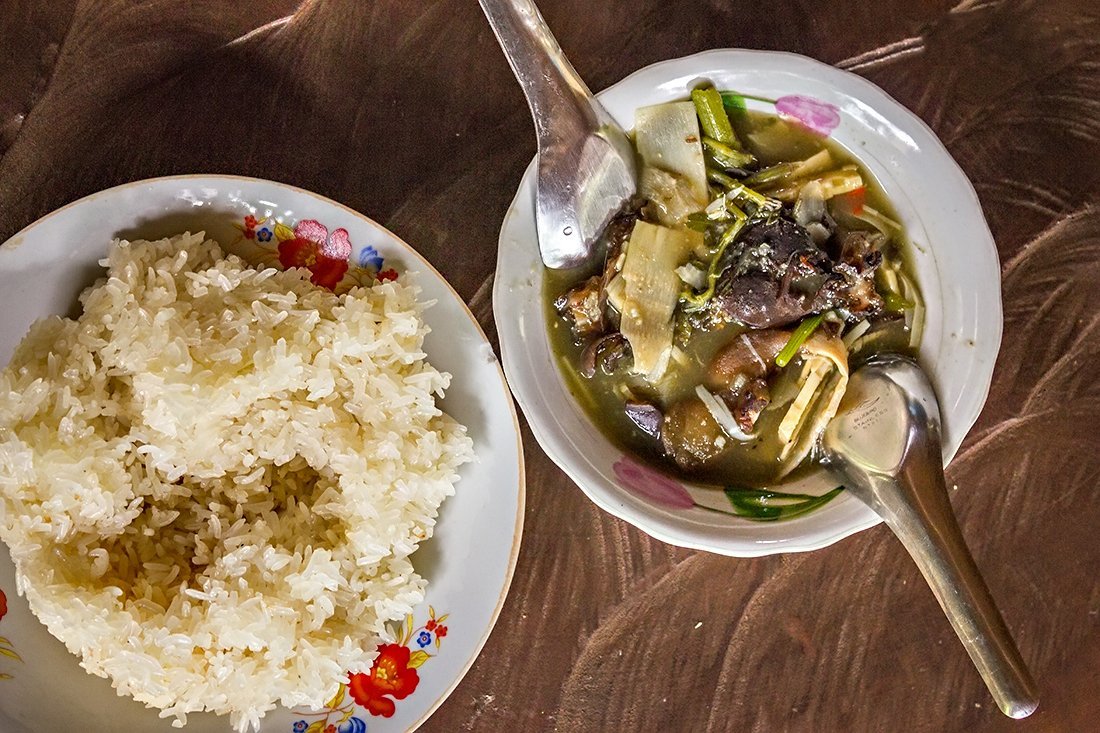
For breakfast he offered us some bamboo soup! Well, it was interesting to try, but I wouldn't try it again. Bamboo is really stiff. 😆
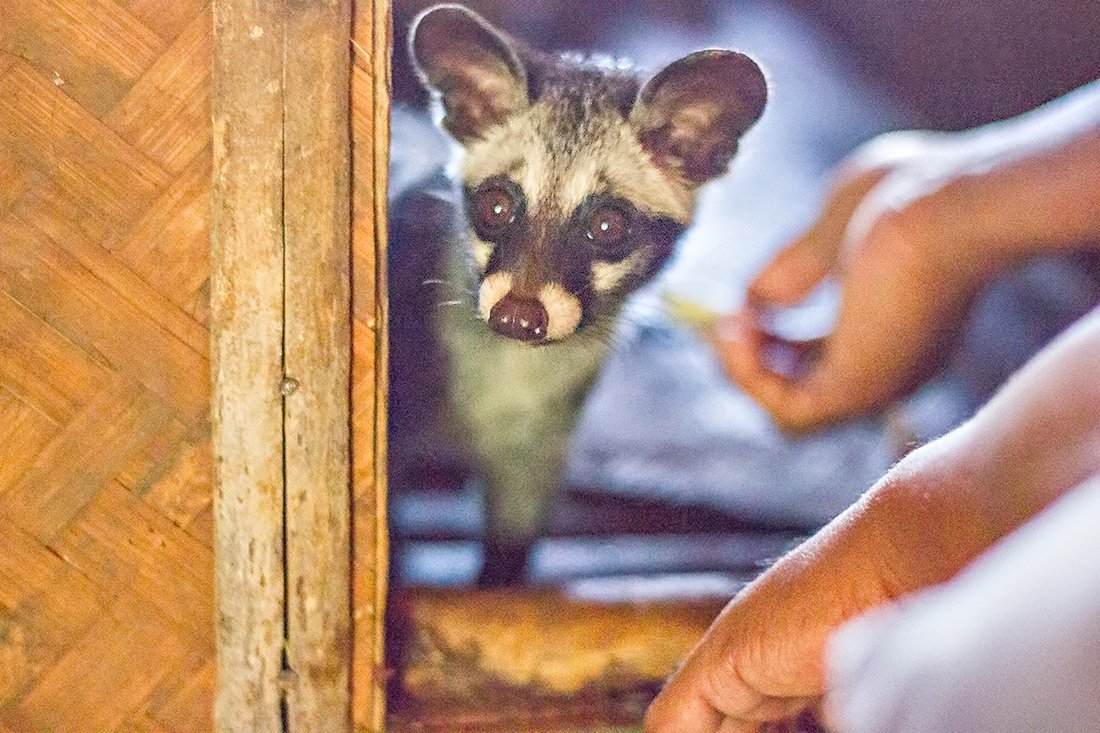
The most exciting part was that Vieng had some civets living with him! Those cute cat-like animals eat fruits and coffee beans. You can find them at some coffee plantations making Kopi Luwak. It's coffee that is prepared using coffee cherries that have been eaten and partially digested by the Asian palm civet, then harvested from its... khm... fecal matter. I still haven't tried that kind of coffee though. 😅
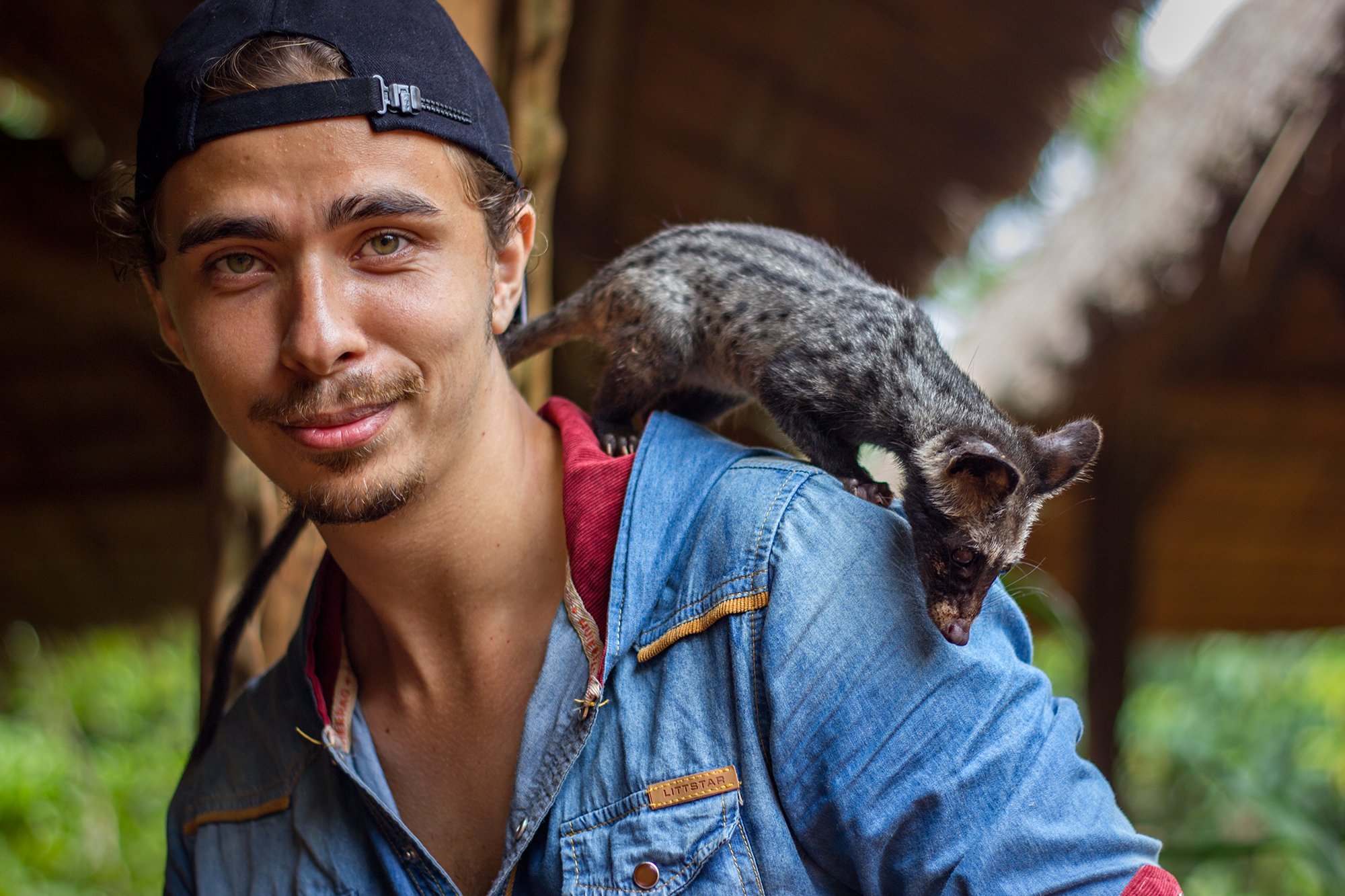
Civets are usually captured in cages, but not in Katu homestay. Vieng's civets are still very young, and he trains them to get used to people, he even allowed us to hold one of them in hands - it was nervous when I tried to hold it still, but when I just let it walk around my hands it was ok. I don't have a photo of me with a civet but I took a pic of Artur! 😊
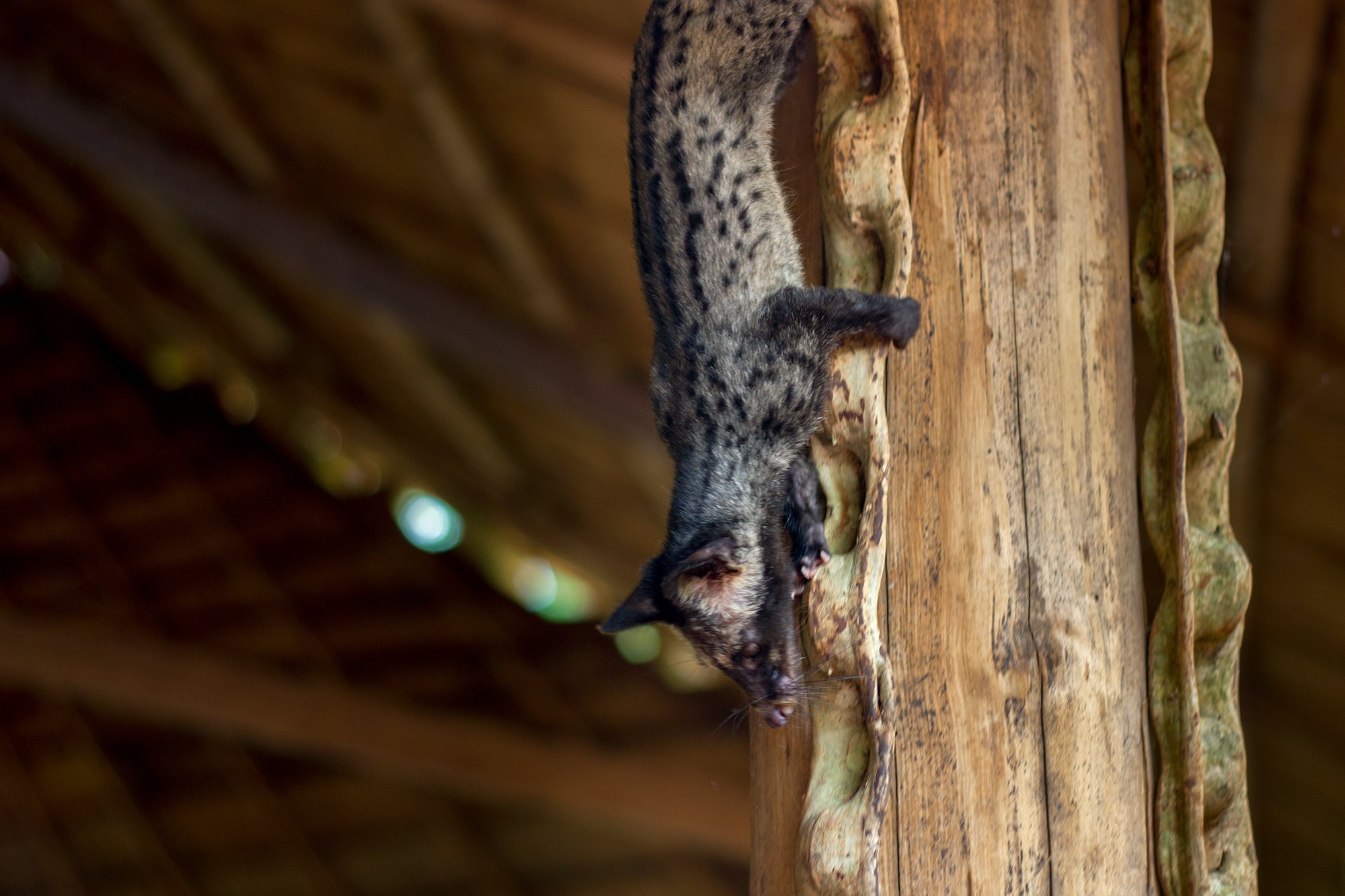
Unlike cats they can't jump down even from a table, which was funny - but they can walk up and down trees and furniture, climbing with all four paws. Their long tail probably helps them to keep balance.
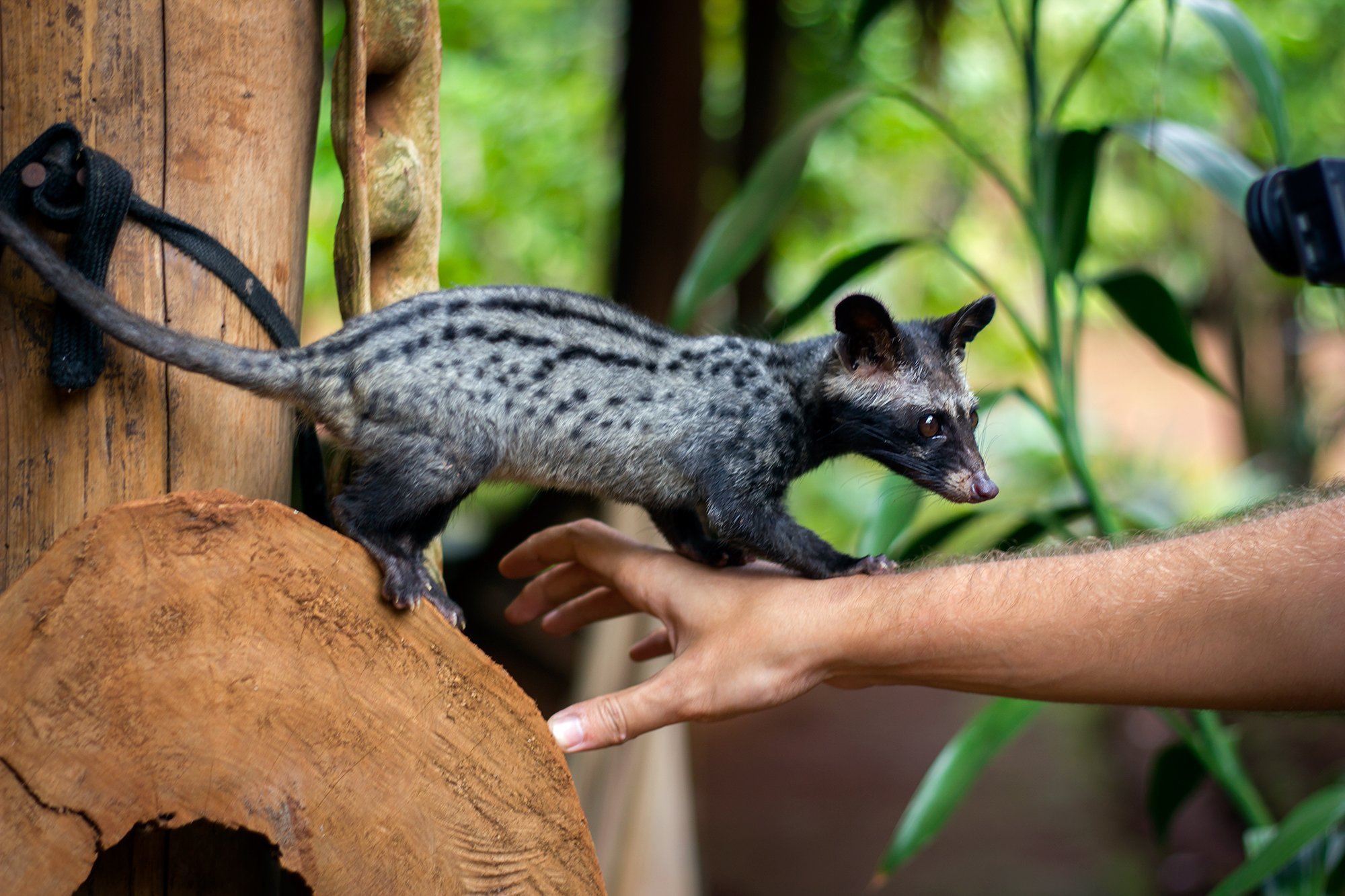
These young ones don't eat coffee yet, but we fed it a small banana! It took the banana with two paws and it was so cute! I wanted to feed it again to take a photo, but it didn't want any more.
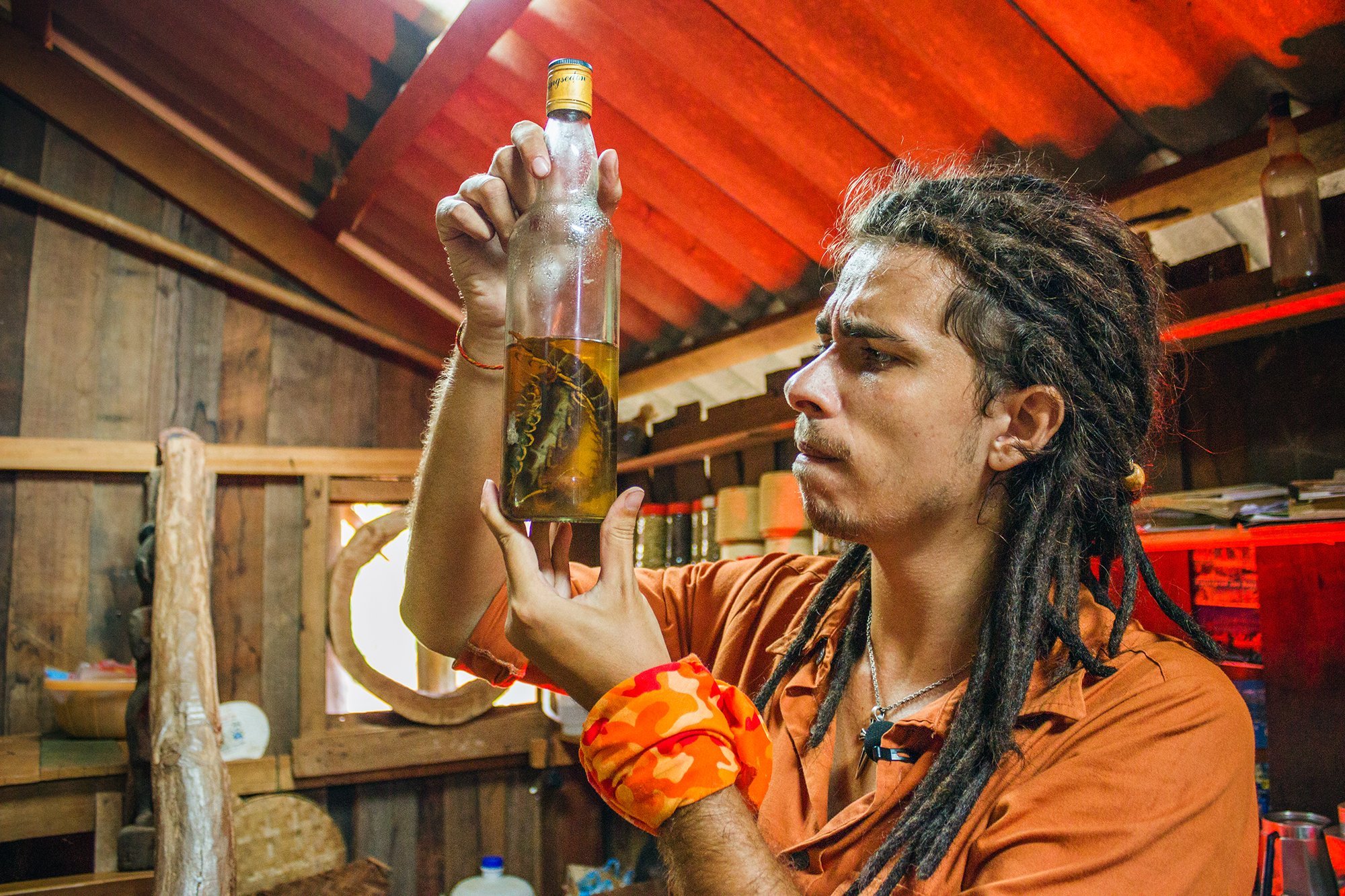
Vieng also showed us his bottles with centipides - these tinctures are supposed to help if one of these monsters bite you. You will get fever after being bitten by it, but drinking that stuff somehow helps.
So knowing about this new danger we headed out to our next stop, Tad Lo waterfall. Will show it to you in the next post ! So stay tuned! 😉
All photos taken with Canon 550d 😊

!steemitworldmap 15.345454 lat 105.9816123 long Bolaven Plateau Road Trip: Coffee Plantation and Playing with Civets D3SCR
